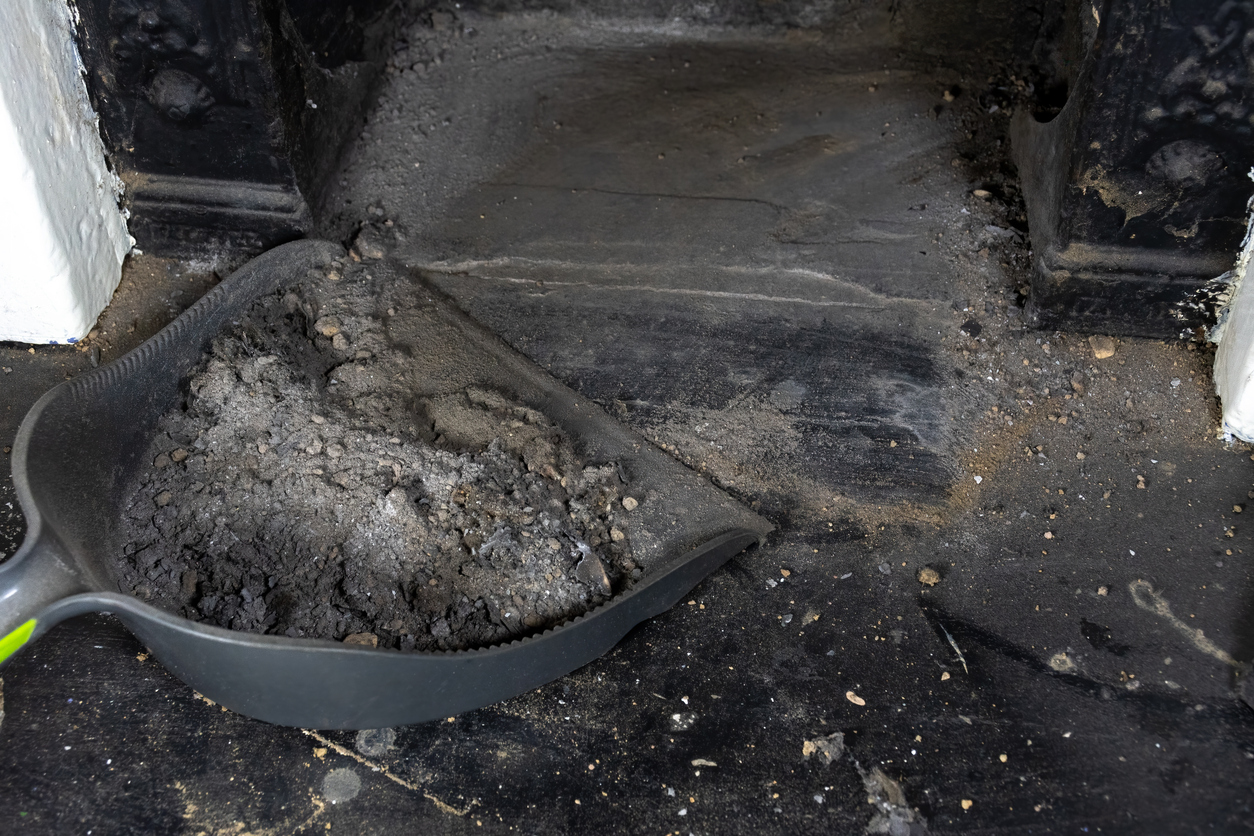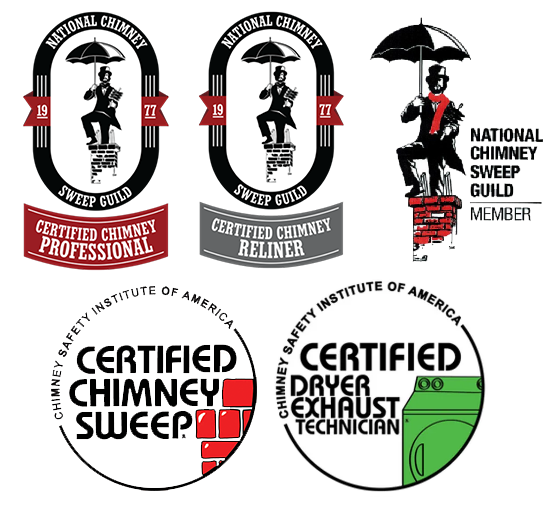
A well-maintained chimney is essential for both safety and functionality. Regular chimney cleaning and timely repairs are crucial to ensure your fireplace or heating appliance operates efficiently and without risk. But how do you know when your chimney needs attention? In this comprehensive guide, we’ll explore the signs that indicate your chimney may require cleaning or repair, helping you maintain a safe and enjoyable fireplace experience. It is important to hire certified professionals for chimney maintenance, and the Chimney Safety Institute of America (CSIA) provides guidance on finding local certified experts.
1. Visible Creosote Buildup
Creosote is a black, tar-like substance that forms on the inner walls of your chimney as a result of burning wood or other fuels. It is highly flammable and can catch fire, posing a significant risk of damage to your chimney and potentially your entire building. One of the most obvious signs that your chimney needs cleaning is the presence of visible creosote buildup. If you notice a thick layer of creosote inside your chimney, it’s time to schedule a professional chimney creosote removal.
2. Reduced Draft and Poor Ventilation
A properly functioning chimney should provide adequate draft and ventilation for your fireplace or heating appliance. If you notice reduced draft, where smoke seems to linger in the fireplace or spills into the room, it may be due to obstructions, such as creosote buildup or debris, in the chimney flue. Poor ventilation can also result in a smoky or unpleasant indoor environment. In such cases, a thorough cleaning of the chimney may be necessary to restore proper airflow and prevent toxic fumes from entering your home, which can pose serious health risks.
3. Unpleasant Odors
Foul or unusual odors emanating from your fireplace or chimney are a clear indication of a problem. These odors can be caused by a variety of issues, including:
– Animals or Nesting Debris: Animals or birds may find their way into the chimney and leave behind nesting materials or carcasses, causing unpleasant odors.
– Moisture: Excess moisture in the chimney can lead to mold and mildew growth, resulting in musty or damp odors.
– Creosote: A strong, acrid odor can be emitted when creosote buildup becomes excessive, signaling the need for cleaning.
– Smoke Chamber: Inspecting the smoke chamber is crucial for identifying creosote buildup and potential structural defects that can cause unpleasant odors.
If you detect any unusual or foul smells coming from your chimney, it’s advisable to have it inspected and cleaned promptly.
4. Smoke Backing Up into the Room
When your fireplace or heating appliance is in use, the smoke should flow up the chimney and out of your home. If you experience smoke backing up into the room, it can indicate a blockage or airflow issue within the chimney. This situation is not only inconvenient but also poses a severe health risk due to the potential inhalation of harmful gasses and particulates. Immediate attention is required to address the problem and ensure proper ventilation, as poor ventilation can lead to the dangerous buildup of carbon monoxide.
5. Excessive Soot Accumulation
Soot is a fine, black powder that results from incomplete combustion of fuel. While some level of soot buildup is normal, excessive accumulation can hinder your fireplace’s efficiency and safety. If you notice a thick layer of soot in the firebox or on the walls of the chimney, it’s a clear sign that your chimney needs cleaning. Soot can also indicate improper burning techniques or a malfunctioning appliance, which should be addressed to prevent further buildup. Additionally, cleaning the smoke shelf is crucial to prevent chimney fires, as this area is prone to soot accumulation.
6. Cracks or Damage to the Chimney Structure
The structural integrity of your chimney is crucial for safety and performance. Over time, exposure to weather elements and temperature fluctuations can lead to damage, including cracks, loose bricks, or deteriorating mortar joints. Signs of chimney structural issues include:
– If you notice cracks in the chimney masonry or flue tiles, it is a sign that chimney repair may be needed.
– Loose or damaged bricks or stones.
– Falling or missing chimney parts.
– Leaks or water damage around the chimney.
If you notice any of these signs, it’s essential to have your chimney inspected and repaired promptly to prevent further deterioration.
7. Water Leaks and Stains
Water infiltration is a common problem for chimneys, and it can lead to various issues, including chimney damage, deterioration of flue liners, and mold growth. Signs of water leaks and stains around the chimney area, either inside or outside your home, are red flags that your chimney may require repairs. Additionally, inspecting and maintaining the chimney liner is crucial to prevent water damage, as cracks or soot buildup can exacerbate the problem. If you hear dripping or notice wet spots on the walls or ceiling near the chimney, these are clear indications of a water-related problem that needs attention.
8. Rust or Corrosion
If you have a metal chimney or components, such as a chimney cap or flashing, inspect them regularly for signs of rust or corrosion. Rust can weaken the structure and lead to leaks or other issues. If you notice rusty or corroded areas, it’s important to address the problem promptly. Professional chimney repair services can replace damaged metal components, apply rust-resistant coatings, and ensure the integrity of your chimney system.
9. Damaged or Missing Chimney Cap
A chimney cap is a protective cover that sits on top of the chimney to keep out rain, debris, animals, and birds. If your chimney cap is damaged, missing, or in poor condition, it can lead to a range of problems, including:
– Water infiltration and moisture-related damage.
– Entry of animals and nesting debris.
– Increased creosote buildup due to reduced airflow, which can significantly raise the risk of a chimney fire.
– Reduced draft and poor ventilation.
Inspect your chimney cap regularly and replace it if it shows signs of wear or damage to prevent these issues.
10. Animal or Bird Activity
Chimneys can become inviting nesting places for birds, squirrels, raccoons, and other animals. Signs of animal or bird activity in or around your chimney include:
– Unusual sounds coming from the chimney, such as scratching or chirping.
– Debris, nesting materials, or animal droppings in the firebox or on the chimney damper.
– Foul odors associated with animal presence.
To address this issue, it’s important to have the chimney inspected and take appropriate measures to prevent future intrusions, such as installing a chimney cap or using animal-resistant screens. Hiring a professional chimney sweep can ensure thorough cleaning, inspection for defects, and effective prevention of animal intrusions.
Recognizing the signs that your chimney needs cleaning or repair is essential for maintaining a safe, efficient, and enjoyable fireplace experience. Regular chimney sweeps, inspections, and timely repairs can help prevent costly damage and ensure that your chimney operates as it should. If you observe any of the signs mentioned in this guide, it’s crucial to address them promptly by contacting a qualified chimney professional. Prioritizing chimney care not only enhances safety but also extends the lifespan of your chimney and heating appliance, allowing you to enjoy the warmth and comfort of your home with peace of mind.

